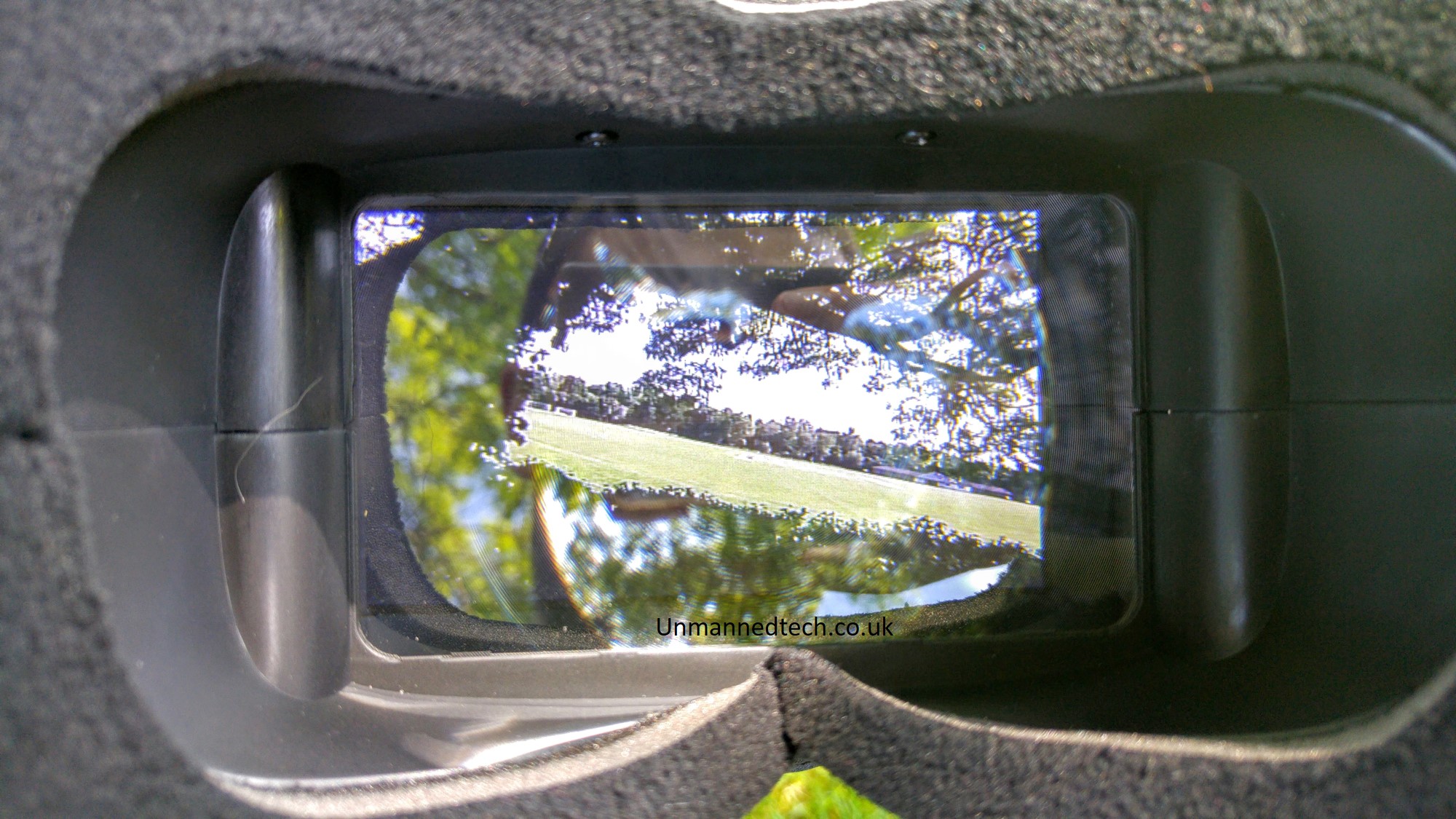The VR-007 is a 4.3 inch FPV headset that uses a single 480×272 pixel LCD panel behind a Fresnel lens in a lightweight molded plastic enclosure. This enables ultra large viewing angles to get fully immersed into the FPV experience. A battery is also included that has a built in USB charger to make it very easy to use. The built in 40ch race band receiver ensures you will be able to use this with all your FPV transmitters.
The Good

- Very affordable FPV headset
- 40ch raceband receiver built in
- Lightweight and comfortable to wear
- Intuitive battery with charge indicator and build in USB charger
- Auto tune function makes it super easy to connect to your FPV quadcopter
- Truly no blue screen LCD panel
The Bad
- Not the highest resolution screen
- Comes with a linear polarized duck antenna (why couldn’t they include a cloverleaf?)
Why we sell it
This headset is a similar to the headplay HD in the sense that they use a single LCD screen behind a lens, but the VR007 are offered at about a quarter the price of the headplay HD’s, making these goggles a great entry level FPV option. I almost prefer to use these over the headplay HD despite the poorer resolution, because the tiny size of the VR007 headset make it super easy to carry around.

The LCD Pannel

Lets start with the LCD panel as its the thing you will be looking at the longest. On first impressions the 480×272 pixels display might seem uninspiring, however when you consider that analogue FPV video is only around 600TVL (equivalent to 640×480 pixels) then you dont loose too many pixels with this screen. Furthermore the Fresnel lens does a good job at focusing the responsive image with vivid, bright colours. Sure this might not be the HD resolution of something like the headplay HD’s, but for a cheap, and small FPV headset the VR-007 do a great job when paired with a decent FPV camera.
One of the nice things about having a single LCD display versus other goggles like the Fatsharks is that you dont need to worry about IPD or getting the two lenses to align exactly with your eyes. You also have enough space to wear your glasses with the VR-007 headset assuming they are smallish frames.

Finding your FPV signal
These goggles include a 40 channel raceband receiver which means that these will work with just about any FPV transmitter, and switching channels is easy via the change channel button.
With most other FPV goggles you need to switch the channel one at a time by pressing the button, this can get a bit annoying if you have to scan through all 40 channels. The VR-007 auto tune feature makes this process very easy. Simply press and hold the change channel button for about 1 second. Then the receiver will start switching through all the channels until it finds the one with the best signal. And that is all there is to it as shown in the video below.
Smart battery
One of the most surprising (in a good way) features is the battery you get with the FPV goggles. It reminds me of the DJI smart battery with a push button and LED indicators. This is very useful as you can quickly check the charge before heading out to the flying field.

But the best feature of the battery is the fact that it has a built in USB connector which you use to charge it. No more messing around with other balance chargers, just plug it into a spare USB port of your PC, or use your phone charger.

So thats what we think of the VR-007 FPV goggles and why its the best beginner FPV headset to get a taste for high speed FPV flying. Combine this to one of our Falcon FPV drone kits to have a full FPV racing setup for less than £230. I even find myself grabbing a pair of these goggles over some headplays when heading out for a quick flight due to the portability and the fact that I can see how much battery charge there is.
If you have any comments or questions just add a comment and we will answer!








